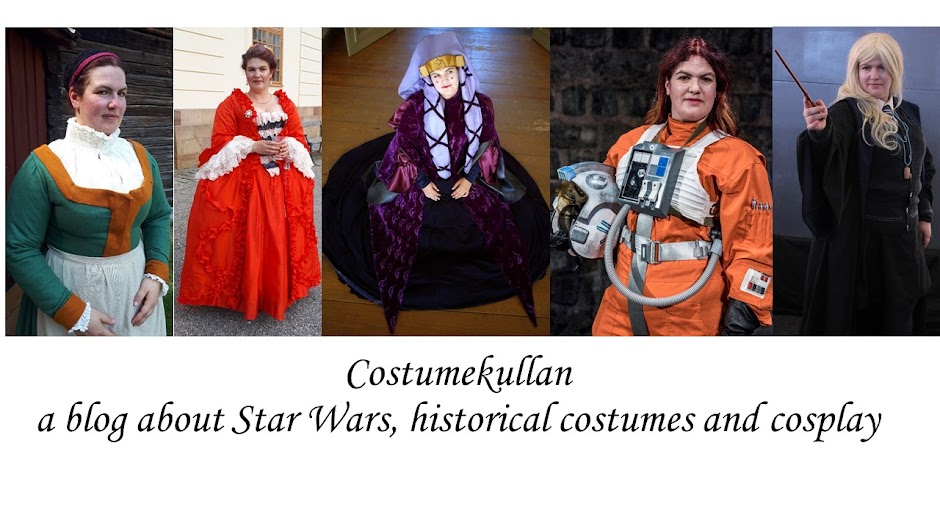To stabilize the lacing I added an extra strip of thick linen between the lining and the outer fabric where the lacing was going to be. I'm hoping this will be enough without having to add any boning. My current kirtle is made of the same fabric as the extra strip, and it doesn't need any boning.
In order to make the holes I didn't want to punch or cut holes, something that every corset pattern says that you should never do since it weakens the fabric.
To make the holes I started with using an awl to make a small hole. This doesn't cut any fibres in the fabric, it just moves them to the side.
When I had a small hole I pushed a larger knitting needle through. This is the only knitting needle that I own, and I have it becaue it makes perfect holes for 00 grommets when making corsets.
I wanted the holes to be a bit larger though. I had used the knitting needle in my teal 1490's gown, and the lacing holes ended up being very small. I didn't have a larger knitting needle, so I simply used the handle of a paintbrush that I thought had a suitable size.
When I made the lacing holes I had to keep reinsirting the paintbrush quite often, or else the holes both get a lot smaller and they loose their round shape.
This is the finished front of the bodice. It is going to be spiral laced, that is why the lacing holes are uneven and not straight across from each other.
And this is the inside of the bodice. Along the neckline and the armscyes I simply folded the wool tabby over the edge of the linen and secured it with a small hemstitch. I didn't finish the eges of the wool, since it doesn't fray and I felt that a folded edge got too bulky.
So now it's just the skirt left to make it wearable, and then I want to add a pair of sleeves, depending on how much fabric I have left after the skirt. With some luck I might even be able to wear this new kirtle to a semi-local medieval fair in the weekend. I'm going there over Sunday, so it's not a full weekend event with camping, just a quick visit with my mother and aunt.












































